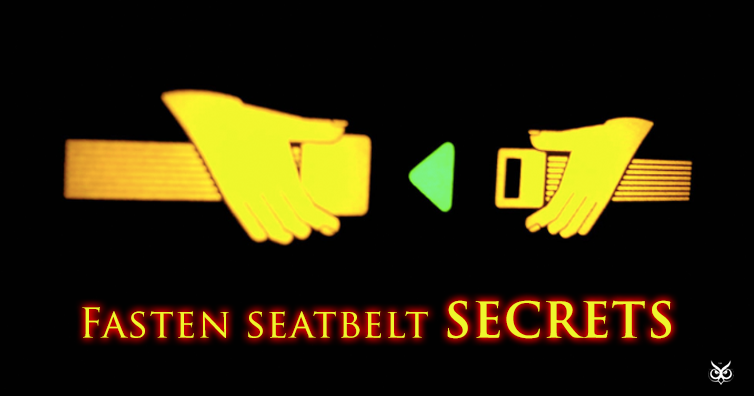Everybody associate the seatbelt sign with turbulence, but the “fasten seatbelt” sign has many, many uses. Obviously, the primary reason that is there is for the flight crew to be able to communicate to both the cabin crew and to the passengers the need to be sitting down and put their seatbelts on.
But what about other cases? Why sometimes the belts sign is on when the plane is on the ground and not moving?
Let’s find out. (the article continues after the ad)
On the ground you might have noticed sometimes that when you board an aircraft the “fasten seatbelt” sign is off and then, all of a sudden, you hear that distinct sound and it comes on. That has to do with if the aircraft is being fueled or not:
The seatbelt sign will be off during the entire fueling part to indicate to the cabin crew that fueling is still going on and also to make sure that the passengers haven’t got a seatbelt on in case they quickly have to evacuate if there is a fuel leak or fire somewhere close to the aircraft. So, on the ground when you hear that “bing” and the seatbelt is on, that means that the fueling is finished.
Then the seatbelt sign will of course, be on during the initial part where the pilots are starting up the engines and taking off because they need the passengers to be seated and listen to the cabin crew during that phase of flight.
Now, somewhere during the flight, the passengers are released so they can go to the toilet and move around in the cabin. The first call is to release the cabin crew and then, at around 10,000 feet, providing that there is no turbulence forecasted, the passengers are released with a second call. The pilots do that by putting the “fasten belts” switch to “auto”, not “off” – the reason for doing so is because if they forget to get the belts “on” again during the descent, once the gear comes down, the sign will be turned on automatically:
During the climb, if the plane encounters turbulence the first thing pilots do is to put the belts on because they need to protect the passengers. This also happens in anticipation of the turbulence or if they’re getting a report from air-traffic control that an aircraft ahead has experienced turbulence.
Speaking of turbulence, there are three (3) kinds of it: light, moderate and severe turbulence. For all three of these we need the belts to be on. However, because light turbulence happens almost all of the time as the plane moves around in the air, turning the “fasten seatbelt” sign on with light turbulence is up to the pilot. Some pilots use the “coffee cup” method: they envisage themselves with a cup of coffee – whenever they think that the turbulence is bad enough for the coffee to be spilled, the sign is on.
Of course, for moderate and severe turbulence the sign is on and if it gets very, very bad the cabin crew should also take their stations. During the cruise, there are some other safety related times where pilots might use the seatbelts sign but pilots won’t talk about them as it has to do with safety and security. The next time the seatbelts sign is on is prior to landing:
This differs in different airlines – the long-haul airlines tend to put the belts on for just before and keep it on for the entire descent, while the short and medium-haul airlines they don’t do that – they usually put the belts on when its 15 minutes left to landing.
When the plane lands, the seatbelt sign is on until the engines are shut down because that’s then, and only then, it’s safe to start disembarking the passengers.
If you like what you read, then you will definitely love this one: These Are The Safest Seats On An Airplane
Photo: Martin Abegglen / Flickr
Photoshop: I’m A Useless Info Junkie
Sources: The secrets of the “Fasten seatbelt” sign

